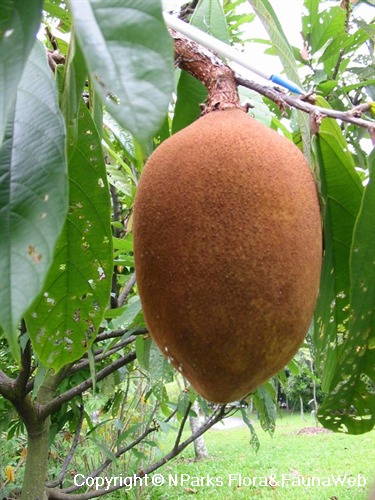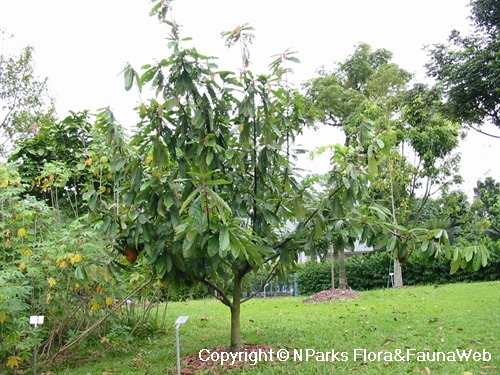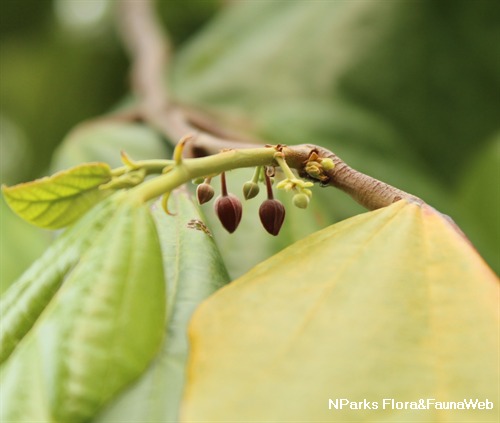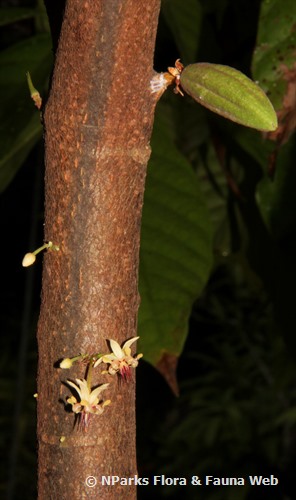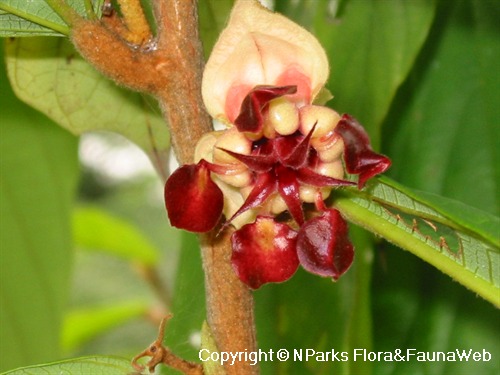
Back
Theobroma grandiflorum (Willd. ex Spreng.) K.Schum.
| Family Name: | Malvaceae |
| Synonyms: | Bubroma grandiflorum |
| Common Name: | Cupuassu |
Name
Classifications and Characteristics
| Plant Division | Angiosperms (Flowering Seed Plants) |
|---|---|
| Plant Growth Form | Tree |
| Lifespan (in Singapore) | Perennial |
| Mode of Nutrition | Autotrophic |
Biogeography
| Native Distribution | Brazil |
|---|---|
| Native Habitat | Terrestrial |
| Preferred Climate Zone | Tropical |
| Local Conservation Status | Non-native |
Description and Ethnobotany
| Growth Form | Tree up to 8 m tall in cultivation and 20 m tall in the wild. |
|---|---|
| Foliage | Leathery leaves are bright green and hairy on top and grey below (25-35 cm long, 6-10 cm wide). |
| Flowers | Dark purple flowers are arranged in clusters of 3-5 in a cymose inflorescence. |
| Fruit | Smooth, elliptical fruits are known as drupes (25 cm long, 12 cm wide). Fruits weigh 0.2-4 kg and contain 30-50 seeds. |
| Ethnobotanical Uses | Edible Plant Parts : Edible Fruits Food (Fruit or Vegetable): The pulp surrounding the seeds has an acidic-sweet flavour and is used to make juice and ice cream. Although related to cacao, it is typically not used to make chocolate due to the low melting point of its fat content. |
Landscaping Features
| Desirable Plant Features | Ornamental Flowers |
|---|
Plant Care and Propagation
| Light Preference | Full Sun |
|---|---|
| Water Preference | Moderate Water |
| Plant Growth Rate | Moderate |
Foliar
| Mature Foliage Colour(s) | Green |
|---|---|
| Leaf Area Index (LAI) for Green Plot Ratio | 3.0 (Tree - Intermediate Canopy) |
Floral (Angiosperm)
| Flower Colour(s) | White, Red |
|---|
Image Repository
Others
| Master ID | 1896 |
|---|---|
| Species ID | 3189 |
| Flora Disclaimer | The information in this website has been compiled from reliable sources, such as reference works on medicinal plants. It is not a substitute for medical advice or treatment and NParks does not purport to provide any medical advice. Readers should always consult his/her physician before using or consuming a plant for medicinal purposes. |

